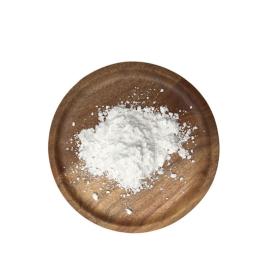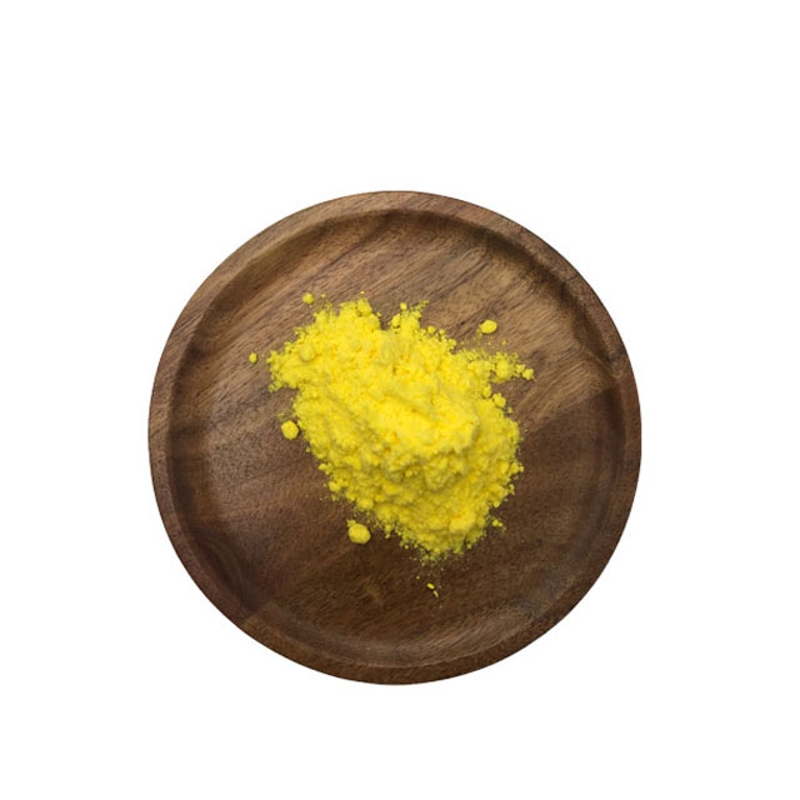-
Categories
-
Pharmaceutical Intermediates
-
Active Pharmaceutical Ingredients
-
Food Additives
- Industrial Coatings
- Agrochemicals
- Dyes and Pigments
- Surfactant
- Flavors and Fragrances
- Chemical Reagents
- Catalyst and Auxiliary
- Natural Products
- Inorganic Chemistry
-
Organic Chemistry
-
Biochemical Engineering
- Analytical Chemistry
- Cosmetic Ingredient
-
Pharmaceutical Intermediates
Promotion
ECHEMI Mall
Wholesale
Weekly Price
Exhibition
News
-
Trade Service
On April 9-10, the 2021 National Breast Cancer Conference and Chinese Society of Clinical Oncology Breast Cancer (CSCO BC) Annual Meeting was successfully held in Beijing in the form of "online + offline".
At this meeting, the "2021 CSCOBC Diagnosis and Treatment Guidelines" was officially released.
On the basis of the past, the 2021 version of the guidelines continues to be updated based on the principles of evidence-based, balanced access, and expert opinions, ensuring the scientificity and timeliness of the guidelines.
Yimaitong invited Professor Wang Kun from Guangdong Provincial People's Hospital to share the updated key points in the new version of the guide in the field of neoadjuvant therapy for HER2-positive early breast cancer.
Expert profile Professor Wang Kun, famous doctor of the country, chief physician, doctoral tutor, Director of the Second Department of Breast, Guangdong Provincial People’s Hospital, CSCO Director, CSCO Breast Cancer Specialty Committee Standing Committee, Chinese Anti-Cancer Association Breast Cancer Specialty Committee (CACA-CBCS) Member, Guangdong Provincial Medical Association Breast Gland Yi Maitong, vice chairman of the Society of Diseases, Chairman of the Youth Committee of the Guangdong Medical Association of Breast Diseases: Regarding the neoadjuvant treatment of HER2-positive early breast cancer, what are the updated points in the 2021 version of the guidelines? Professor Wang Kun: Neoadjuvant therapy refers to systemic drug therapy such as chemotherapy, endocrine therapy, and molecular targeted therapy performed before surgery.
Fully assessing the patient's local tumor and systemic conditions before treatment is essential to formulating a scientific and reasonable treatment plan.
The updated key points of the 2021 CSCO Breast Cancer Diagnosis and Treatment Guidelines regarding the neoadjuvant treatment of HER2-positive breast cancer are as follows: 1.
Neoadjuvant treatment indications: the tumor should be larger than 2 cm or lymph node metastasis appears.
The 2018 CSCO Breast Cancer Diagnosis and Treatment Guide proposes neoadjuvant treatment.
The indications should not only be based on clinical staging, but should also be combined with tumor molecular classification.
Neoadjuvant therapy is recommended for HER2-positive breast cancer patients with tumors larger than 2 cm or lymph node metastasis.
The NCCN guidelines in the United States did not recommend this until 2020.
2.
Neoadjuvant treatment regimen: The TCbHP and THP regimen NeoSphere is recommended for level I.
The NeoSphere study confirmed that the addition of Pertuzumab to the TH regimen can further increase the pathological complete remission (pCR) rate of HER2-positive patients.
The PEONY study verified the effectiveness and safety of the THP program in Asian populations.
Therefore, THP can be used as a neoadjuvant treatment for HER2-positive patients.
However, in the design of the clinical study, THP neoadjuvant treatment was performed after 4 cycles, the dual-targeted therapy was suspended after the operation, and the dual-targeted therapy was continued after 3 cycles of FEC.
Experts dispute the clinical feasibility of this program.
The KRISTINE study proved the effectiveness and safety of the TCbHP regimen in neoadjuvant therapy.
The TRAIN-2 study showed that compared with the anthracycline-containing regimen, the TCbHP regimen can achieve the same pCR rate, but it is significantly lower in toxicity such as neutropenia.
Therefore, preoperative treatment can be the first choice for TCbHP.
3.
Adjuvant treatment plan for HER2-positive patients after neoadjuvant therapy: Single target or dual target is used according to neoadjuvant anti-HER2 therapy, and different treatment strategies are given after surgery.
For patients who have reached pCR after a full course of neoadjuvant therapy, postoperative adjuvant The treatment can continue the original targeted therapy.
For patients who only use trastuzane for neoadjuvant therapy, dual-targeted therapy can also be considered based on clinical data for postoperative adjuvant therapy.
For patients who use dual targets for neoadjuvant therapy, if the pCR is not reached, follow-up treatment should be selected reasonably; if the tumor shrinks significantly under the premise of a full course of treatment (such as Miller&Payne grade 3-4), the expert group tends to continue to use dual-targeted therapy , For the tumor shrinkage is not obvious (such as Miller & Payne grade 1-2), the expert group is more inclined to switch to T-DM1 treatment.
Yimaitong: With the continuous update of the concept of neoadjuvant therapy, what opportunities and challenges will neoadjuvant therapy face in the future? Professor Wang Kun: With the continuous updating of various clinical trials and new treatment concepts in the field of breast cancer, I believe that in the next few years, more and more good drugs will emerge in the field of neoadjuvant therapy.
For example, as an irreversible small molecule TKI anti-HER2 drug originally developed in China, the remarkable curative effect and good tolerance of pyrrotinib have been verified in the field of HER2-positive advanced breast cancer.
The clinical research of pyrrotinib for the treatment of early breast cancer has also been completed.
I believe that the release of subsequent clinical data will bring surprises to everyone.
The new generation ADC drug DS8201 also has great therapeutic potential, and its clinical research in HER2-positive early breast cancer is also being carried out.
The constantly coming out molecular targeted drugs have brought new hope and new treatment methods for the neoadjuvant treatment of breast cancer.
With the continuous deepening of clinical research, we will also get more treatment basis in the future.
At this meeting, the "2021 CSCOBC Diagnosis and Treatment Guidelines" was officially released.
On the basis of the past, the 2021 version of the guidelines continues to be updated based on the principles of evidence-based, balanced access, and expert opinions, ensuring the scientificity and timeliness of the guidelines.
Yimaitong invited Professor Wang Kun from Guangdong Provincial People's Hospital to share the updated key points in the new version of the guide in the field of neoadjuvant therapy for HER2-positive early breast cancer.
Expert profile Professor Wang Kun, famous doctor of the country, chief physician, doctoral tutor, Director of the Second Department of Breast, Guangdong Provincial People’s Hospital, CSCO Director, CSCO Breast Cancer Specialty Committee Standing Committee, Chinese Anti-Cancer Association Breast Cancer Specialty Committee (CACA-CBCS) Member, Guangdong Provincial Medical Association Breast Gland Yi Maitong, vice chairman of the Society of Diseases, Chairman of the Youth Committee of the Guangdong Medical Association of Breast Diseases: Regarding the neoadjuvant treatment of HER2-positive early breast cancer, what are the updated points in the 2021 version of the guidelines? Professor Wang Kun: Neoadjuvant therapy refers to systemic drug therapy such as chemotherapy, endocrine therapy, and molecular targeted therapy performed before surgery.
Fully assessing the patient's local tumor and systemic conditions before treatment is essential to formulating a scientific and reasonable treatment plan.
The updated key points of the 2021 CSCO Breast Cancer Diagnosis and Treatment Guidelines regarding the neoadjuvant treatment of HER2-positive breast cancer are as follows: 1.
Neoadjuvant treatment indications: the tumor should be larger than 2 cm or lymph node metastasis appears.
The 2018 CSCO Breast Cancer Diagnosis and Treatment Guide proposes neoadjuvant treatment.
The indications should not only be based on clinical staging, but should also be combined with tumor molecular classification.
Neoadjuvant therapy is recommended for HER2-positive breast cancer patients with tumors larger than 2 cm or lymph node metastasis.
The NCCN guidelines in the United States did not recommend this until 2020.
2.
Neoadjuvant treatment regimen: The TCbHP and THP regimen NeoSphere is recommended for level I.
The NeoSphere study confirmed that the addition of Pertuzumab to the TH regimen can further increase the pathological complete remission (pCR) rate of HER2-positive patients.
The PEONY study verified the effectiveness and safety of the THP program in Asian populations.
Therefore, THP can be used as a neoadjuvant treatment for HER2-positive patients.
However, in the design of the clinical study, THP neoadjuvant treatment was performed after 4 cycles, the dual-targeted therapy was suspended after the operation, and the dual-targeted therapy was continued after 3 cycles of FEC.
Experts dispute the clinical feasibility of this program.
The KRISTINE study proved the effectiveness and safety of the TCbHP regimen in neoadjuvant therapy.
The TRAIN-2 study showed that compared with the anthracycline-containing regimen, the TCbHP regimen can achieve the same pCR rate, but it is significantly lower in toxicity such as neutropenia.
Therefore, preoperative treatment can be the first choice for TCbHP.
3.
Adjuvant treatment plan for HER2-positive patients after neoadjuvant therapy: Single target or dual target is used according to neoadjuvant anti-HER2 therapy, and different treatment strategies are given after surgery.
For patients who have reached pCR after a full course of neoadjuvant therapy, postoperative adjuvant The treatment can continue the original targeted therapy.
For patients who only use trastuzane for neoadjuvant therapy, dual-targeted therapy can also be considered based on clinical data for postoperative adjuvant therapy.
For patients who use dual targets for neoadjuvant therapy, if the pCR is not reached, follow-up treatment should be selected reasonably; if the tumor shrinks significantly under the premise of a full course of treatment (such as Miller&Payne grade 3-4), the expert group tends to continue to use dual-targeted therapy , For the tumor shrinkage is not obvious (such as Miller & Payne grade 1-2), the expert group is more inclined to switch to T-DM1 treatment.
Yimaitong: With the continuous update of the concept of neoadjuvant therapy, what opportunities and challenges will neoadjuvant therapy face in the future? Professor Wang Kun: With the continuous updating of various clinical trials and new treatment concepts in the field of breast cancer, I believe that in the next few years, more and more good drugs will emerge in the field of neoadjuvant therapy.
For example, as an irreversible small molecule TKI anti-HER2 drug originally developed in China, the remarkable curative effect and good tolerance of pyrrotinib have been verified in the field of HER2-positive advanced breast cancer.
The clinical research of pyrrotinib for the treatment of early breast cancer has also been completed.
I believe that the release of subsequent clinical data will bring surprises to everyone.
The new generation ADC drug DS8201 also has great therapeutic potential, and its clinical research in HER2-positive early breast cancer is also being carried out.
The constantly coming out molecular targeted drugs have brought new hope and new treatment methods for the neoadjuvant treatment of breast cancer.
With the continuous deepening of clinical research, we will also get more treatment basis in the future.







